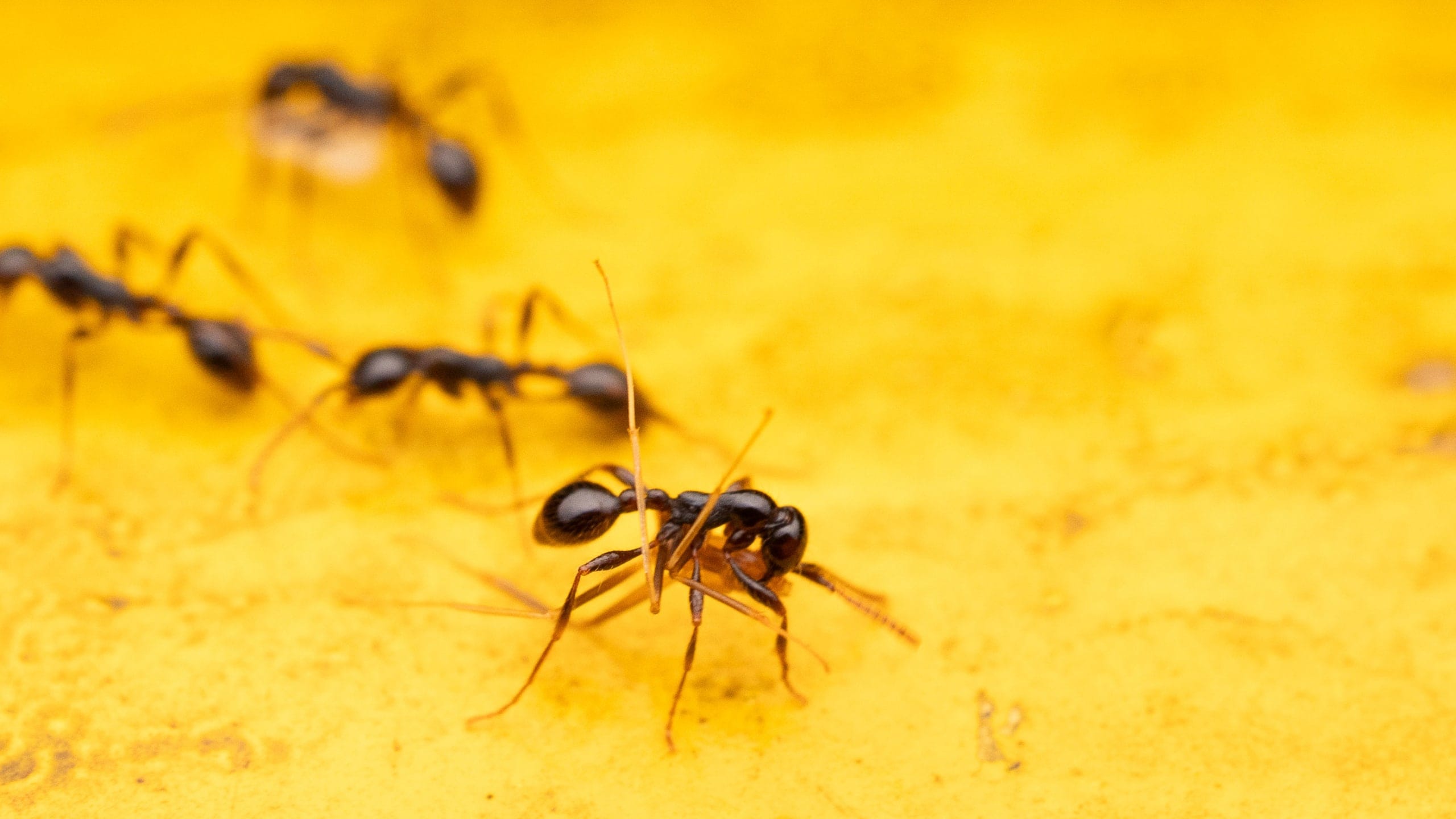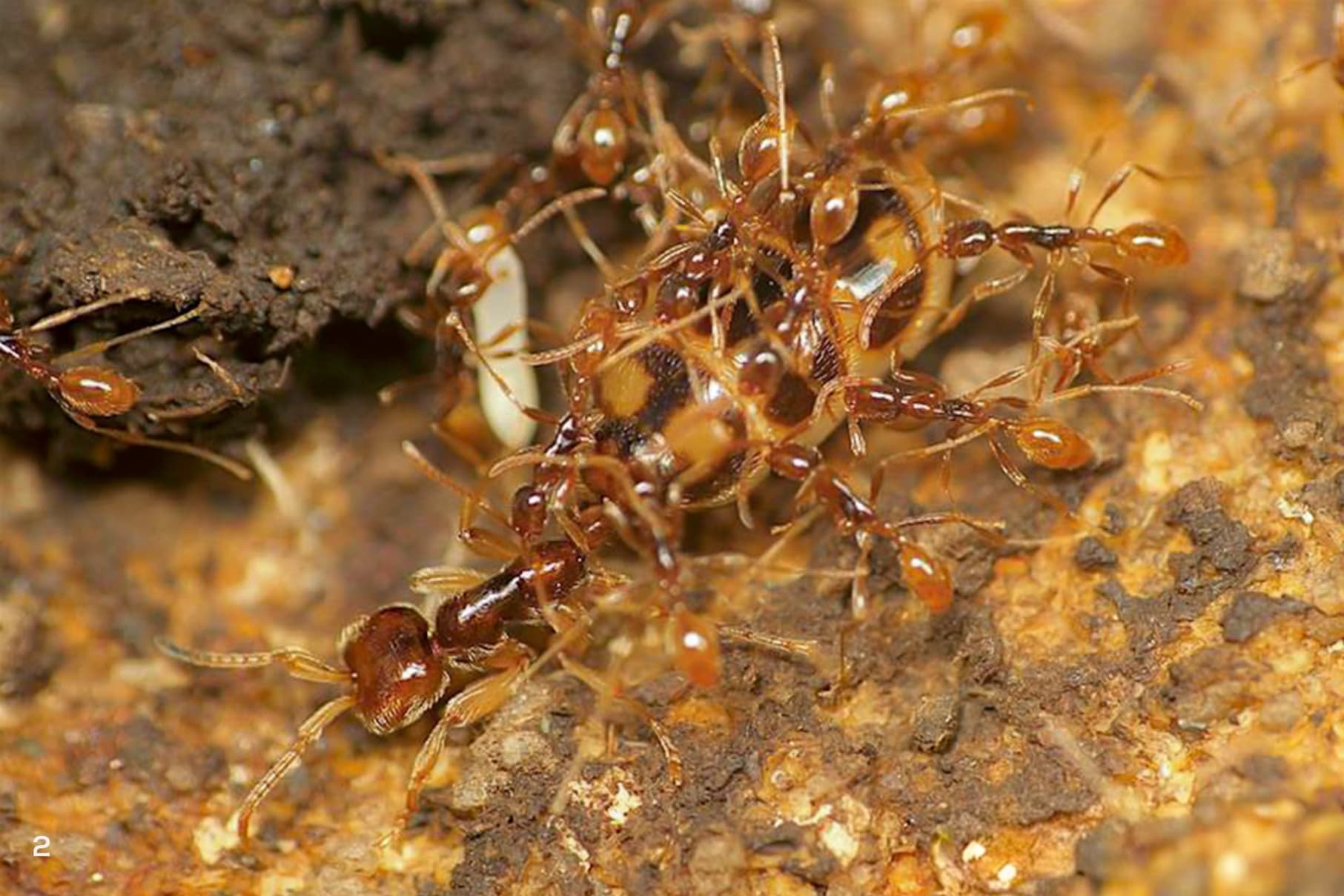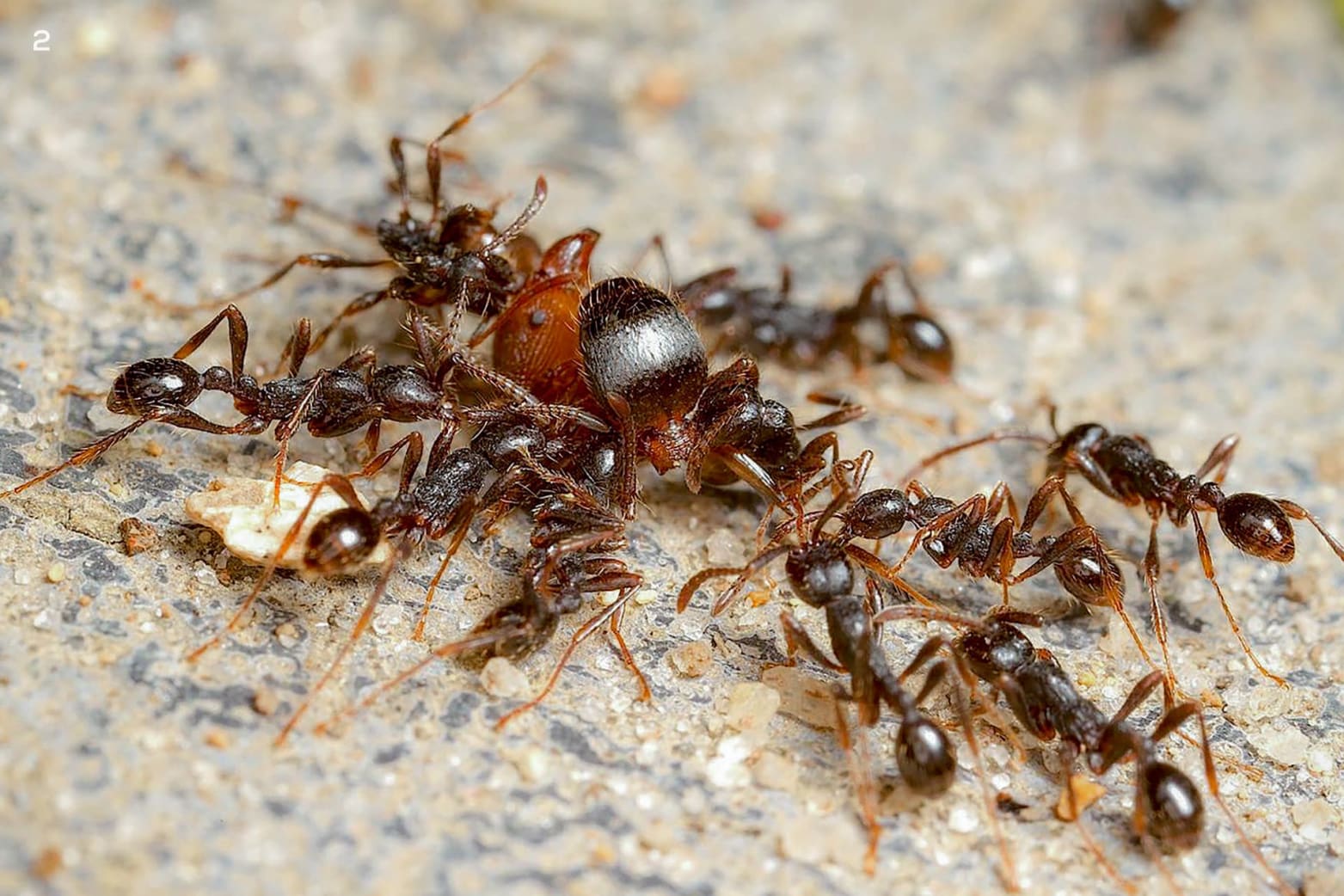 Listen to this article
•
15:34 min
Listen to this article
•
15:34 min
Picture yourself as an unassuming weaver ant, moving down the same tree as you always have since emerging from your pupa. You are enjoying the warm summer breeze as you move down your foraging trail alongside your sisters. Suddenly, you notice a commotion; a group of your sisters is sounding an alarm through their stridulatory call (produced by rubbing body parts). Perhaps it is a bird straying closer than it should, a macaque monkeying around more than usual, or perhaps it is those peculiar bipedal beings who couldn’t keep their curiosity in check. However, none of these is as terrifying as the entity that was responsible for this commotion. Once you come closer, you see them, ravenously tearing apart your sisters, gaining ground over your territory. Then you look down, and notice in horror, thousands of these terrifying fiends are climbing up the only place you’ve known as home, to tear apart and pillage all that you hold dear. Your colony may make it out of this alive, but you know well you will not. Still, you steel yourself to fight against the invading army, betting on the sliver of hope that your queen mother will survive. This snippet represents the terrifying experience of a weaver ant colony being raided by a colony of ants of the genus Aenictus.

Cover Photo: Aenictus sp. worker ant with prey. Photo: Paul Antony
Aenictus is a genus of ants related to the army ants (Eciton) of South America and (Dorylus, also called driver ants) Africa, known to be just as ruthless as their intercontinental counterparts. However, despite being much smaller than their cousins (2-4 mm), they are capable of hunting medium-sized ant species like weaver ants that are almost three times their size! All the species of this genus sustain themselves by raiding and feeding on other ants, termites, and, in some cases, even wasps, and they do this with spectacular efficiency. From organising raiding parties of several thousand workers to tearing apart the species they hunt with pinpoint precision, they are built to be the villains of the ant world. Unfortunately, not much is known about how they locate and raid the colonies of ants they prey on because of their cryptic habit (periodic resting phases and locally uncommon).
Two studies on Aenictus ants from over half a century ago (Wilson, 1964; Schneirla & Reyes, 1966) explore their raiding and predatory behaviours and tactics, providing valuable insights into the behavioural ecology of this species. These reports also tell us that raider ants go through multiple nomadic and stationary phases and describe their behavioural patterns of repeated raids and bivouac relocations.
These ants typically organise in the form of a living nest called a bivouac — a hammock-like structure made of worker ants latched onto each other — creating a safe cavity for the queen and young. This is essentially a living, breathing, temporary abode for the ants, formed every time the colony halts. During the nomadic phase, they are highly active, and the bivouacs move very often. They form raiding channels — twisting trails of thousands of workers — and pillage the colonies of several ant species. This phase can last between 15-30 days, and during it, the queen, who is the sole egg-layer of the colony, stops laying entirely and her abdomen, typically swollen like a large green grape, becomes shrivelled like a raisin. After raiding several colonies of ants and sometimes termites, the legion settles down by making an underground chamber and nesting in it.
This marks the beginning of the stationary phase. During this phase, the queen starts to grow on one end, with her abdomen swelling to several times its original size. This condition, called physogastry, is typical of army ant queens as they turn into egg-laying machines for days on end. As the eggs hatch, the newborn larvae beg for food. With that, the stationary phase comes to an end, the queen’s abdomen shrivels again, and the colony moves, carrying the eggs and larvae with them.
As the nomadic phase restarts, the workers continually bring in the spoils of war to feed the hungry young. The larvae mature quickly and pupate, preparing themselves for induction into the army. After emerging from their pupae, the young workers replenish the ones lost during raids, and the raiding cycle continues indefinitely until the death of the colony.
My story with these ants started in 2022, when I first saw a trail of ants that seemed much more organised than any I had seen before. At that time, the only gear I had was an eyepiece lens of a microscope I had been gifted on my 15th birthday. With just that lens and my phone camera, I was able to observe a trail of tiny, slender orange ants (Aenictus brevicornis) moving rapidly like a band of marching cadets. As I kept my eye on them, I noticed some workers carrying pupae and brood (ant eggs and larvae). At first, I thought those were their own brood and pupae; however, they looked suspiciously larger than the workers carrying them. Eventually, I inspected a worker carrying a pupa and noticed two interesting things. First, the pupa seemed awfully similar to another ant species (Monomorium indicum) I’d commonly observed nearby. Secondly, the orange worker seemed to lack eyes. It was the first time I had seen a completely blind ant, one that raids the nest of other ant species at that. That moment is embedded in my memories as one of the many events that led to my fascination with ants. Since then, I have observed almost a dozen species of this genus with several large-eyed males flying to light sources, as well as workers on their everyday raids.
My most recent observation inspired me to write something about them. I saw a raiding column of Aenictus workers carrying the remains of weaver ant workers, whole larvae, and pupae back to their bivouac. Imagining the horror that the weaver colony must have faced, the almost mechanical way the Aenictus moved and carried their prey, and their ravenous hunger for more seemed like something straight out of a sci-fi movie. These Old World army ants have always been an incredible sight to observe, with perfectly organised trails and, at times, with their pillaged prey being carried away to the bivouac of death.











